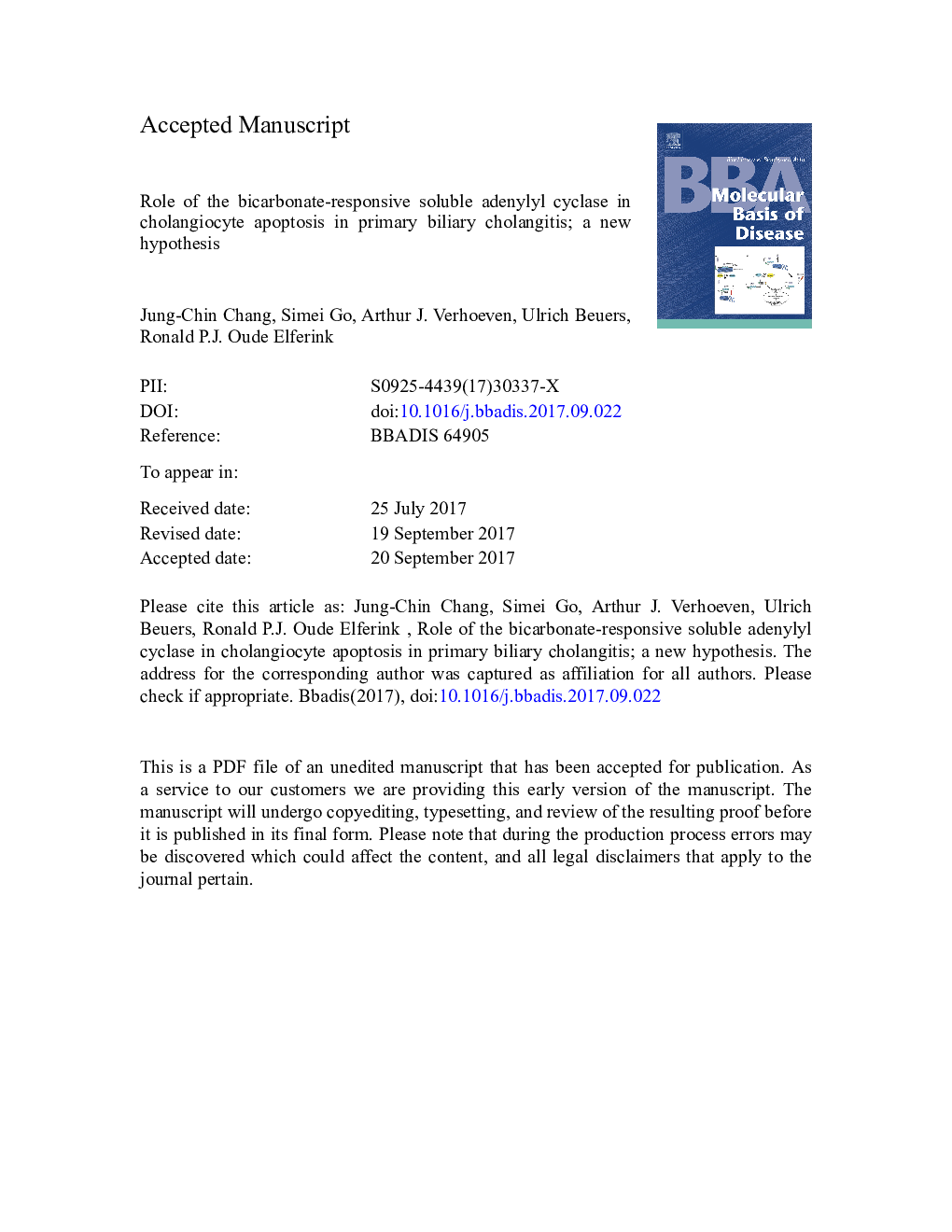| Article ID | Journal | Published Year | Pages | File Type |
|---|---|---|---|---|
| 8258495 | Biochimica et Biophysica Acta (BBA) - Molecular Basis of Disease | 2018 | 47 Pages |
Abstract
Primary biliary cholangitis (PBC) is a chronic fibrosing cholangiopathy characterized by an autoimmune stereotype and defective biliary bicarbonate secretion due to down-regulation of anion exchanger 2 (AE2). Despite the autoimmune features, immunosuppressants are ineffective while two bile acid-based therapies (ursodeoxycholic acid and obeticholic acid) have been shown to improve biochemical and histological features of cholestasis and long-term prognosis. However, the etiology and pathogenesis of PBC is largely unknown. Recently, it has been shown that microRNA-506 (miR-506) on chromosome X is up-regulated in PBC cholangiocytes and suppresses AE2 expression, which sensitizes cholangiocytes to bile salt-induced apoptosis by activating soluble adenylyl cyclase (sAC), an evolutionarily conserved bicarbonate sensor. In this review, we discuss the experimental evidence for the emerging role of the miR-506-AE2-sAC axis in PBC pathogenesis. We further hypothesize that the initial disease trigger induces an X-linked epigenetic change, leading to a female-biased activation of the miR-506-AE2-sAC axis. This article is part of a Special Issue entitled: Cholangiocytes in Health and Diseaseedited by Jesus Banales, Marco Marzioni and Peter Jansen.
Keywords
Related Topics
Life Sciences
Biochemistry, Genetics and Molecular Biology
Ageing
Authors
Jung-Chin Chang, Simei Go, Arthur J. Verhoeven, Ulrich Beuers, Ronald P.J. Oude Elferink,
